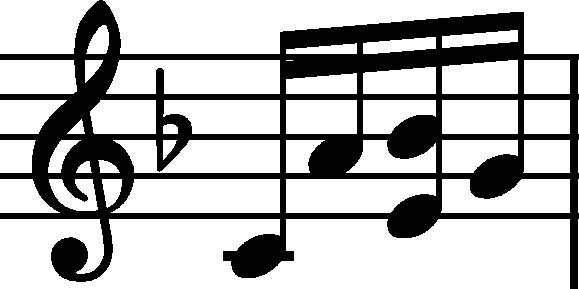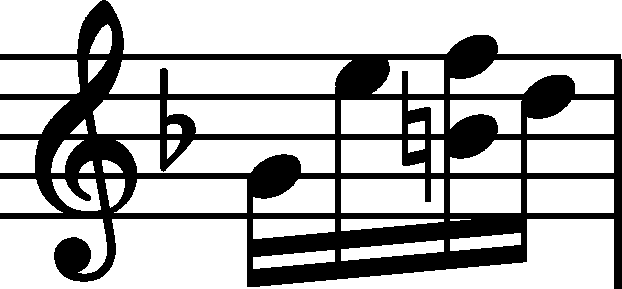



Issues : Deletions in A
|
b. 1
|
composition: Op. 28 No. 18, Prelude in F minor
..
In A we can see the initial tempo indication having been deleted – Presto con fuoco. category imprint: Corrections & alterations; Source & stylistic information issues: Corrections in A , Deletions in A , Changes of tempo markings |
|
|
b. 1-2
|
composition: Op. 28 No. 18, Prelude in F minor
..
In A in both bars Chopin wrote and then crossed out the flats (cautionary?) before the 1st d category imprint: Corrections & alterations; Source & stylistic information issues: Cautionary accidentals , Deletions in A , Last key signature sign |
|
|
b. 1
|
composition: Op. 28 No. 17, Prelude in A♭ major
..
In A one can see that Chopin initially wrote category imprint: Corrections & alterations; Source & stylistic information issues: Changes of metre , Corrections in A , Chopin's hesitations , Deletions in A |
|
|
b. 2-18
|
composition: Op. 28 No. 6, Prelude in B minor
..
Initially, Chopin marked the two-quaver motifs with an accent and a slur – as he did in b. 1 – also in b. 2-6, 11-16 and 18. All those markings were then crossed out – after the three accent/slur combinations in b. 1, Chopin left only one more at the end of b. 22, which, actually, gave it a special meaning. category imprint: Corrections & alterations; Source & stylistic information issues: Corrections in A , Deletions in A |
|
|
b. 2-6
|
composition: Op. 28 No. 23, Prelude in F major
..
Thanks to the crossings-out and added notes in b. 2 and 6 visible in A, we can reconstruct the initial version of the last beat of these bars as category imprint: Corrections & alterations; Source & stylistic information issues: Corrections in A , Deletions in A , Main-line changes |

 quaver.
quaver. to mark the time signature on both staves. Moreover, the eventually left 6/8 reveal (also on both staves) minor crossings-out, which seem to be digits preceding the digits 6, although it is difficult to guess what their meaning could be. Anyways, it is an example of Chopin's hesitation, since the time signature in
to mark the time signature on both staves. Moreover, the eventually left 6/8 reveal (also on both staves) minor crossings-out, which seem to be digits preceding the digits 6, although it is difficult to guess what their meaning could be. Anyways, it is an example of Chopin's hesitation, since the time signature in  and
and  . The idea of changing it probably arose when Chopin was writing b. 6; afterwards, he introduced a respective correction in b. 2. It is proven by the notation of an analogous figure in b. 10, in which the final version was written right away, without corrections.
. The idea of changing it probably arose when Chopin was writing b. 6; afterwards, he introduced a respective correction in b. 2. It is proven by the notation of an analogous figure in b. 10, in which the final version was written right away, without corrections.